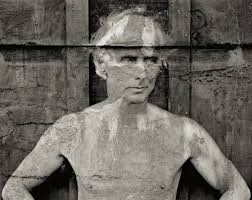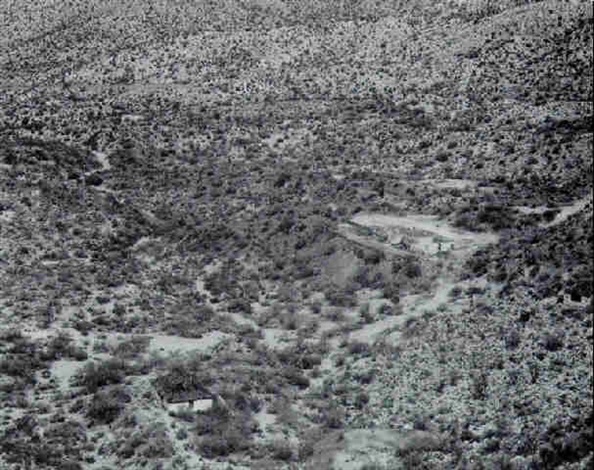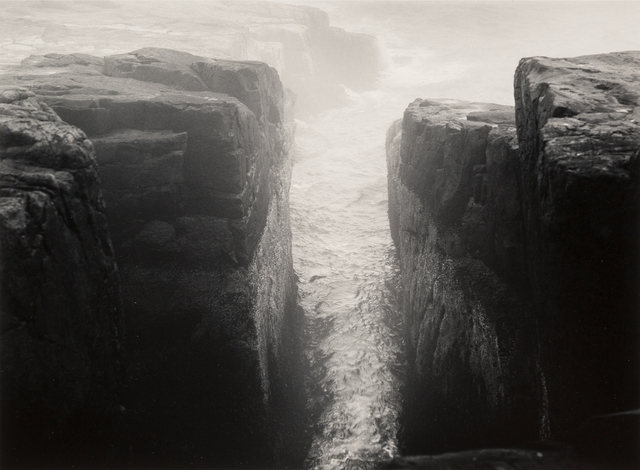Frederick Sommer

Frederick Sommer, born in 1905, was an Italian-born photographer raised in Brazil. He was considered a master photographer, as he started his love for art in photography in 1931. He originally explored his creative trait through watercolour ink and paper but later discovered his passion for photography in 1938, when he acquired an 8×10 Century Universal Camera. Sommer was a self-taught photographer who experimented with wild concepts for his creative work, he worked with materials as extreme as coyote bones and chicken parts. Frederick Sommer often mixed the two concepts of landscape, portrait and abstraction in his work, for example his portrait of Max Ernst, in my opinion, contains all three elements. Sommer’s landscape work of the vast desert he lived in is considered to be his most extravagant and impressive images, he referred these images as “constellations”. Frederick Sommer later died in 1999, in the desert in Arizona where he lived due to medical issues.
Analysis of Frederick Sommer’s work:

light: The natural sunlight of the image allows areas, such as the walking path, to be highlighted amongst the masses of trees and plants. As the sunlight is coming from above, harsh shadows are cast under them which contrasts against the blinding path.
Lines: There is a pandemonium of unorganised lanes scattered across the image in a chaotic manner, therefore they do not lead to a specific focal point.
Repetition: The only form of repetition in this image is the constant cluster of trees running through the photo, however there is no definite pattern.
Shape: The shapes in this photograph are organic and unorganised, giving the image a chaotic appearance.
Space: There is a wide depth of field to this image as the majority of the photo is in focus, there is also no negative space in the photograph as the whole image is busy in all areas.
Texture: The photo appears to have rough texture, as the trees and plants create a harsh, bumpy composition, however this is contrasted against the smoother and less harsh texture of the path running through the image.
Value/Tone: There is a varied tone from dark to light in this photograph as the darkness is concentrated around the middle third, however there are also scattered tones of darkness amongst the light, therefore I believe the tones are balanced.
Colour: The lack of colour in the image enhances the light and dark tones in their natural form.
Composition: As the photo is a natural landscape, the composition is very unorganised and organic. The rule of thirds could possibly be seen in the middle third, with dark areas concentrated here, but there is no recognisable geometric shapes in the image in order to understand the composition.
Minor White

Minor White, an American photographer, theoretician, critic and educator, was born in Minnesota in 1908. His interest in photography began in 1937, as he combined his passion for philosophical theories with taking photos. He was influenced by how people would view photos differently on a personal level, which then began his photography career in black and white and colour landscapes. White created thousands of photos focusing on all areas of landscape, portrait and abstraction before he died in 1976, he also taught photography in many schools across America in his lifetime. His images create a string sense of juxtaposition in the sense of light and dark.
Analysis of Minor White’s work:

The natural lighting in this photograph is reflected onto the water to create and intense highlight running through the middle third of the image. It also allows harsh shadows to be cast either side of the highlighted water to create a juxtaposition of light and dark.
The leading lines of the two cliffs direct the viewers eyes to the middle third of the photo, this creates the focal point of the glistening water, the harsh lighting also accentuates this. There is also a repetition of jagged lines in the image that appear in the cracks of the cliffs.
There is a repetition of line used in this image, but in a more organic sense. The natural cracks in the rocks are present throughout the image, aswell as the curved lines within the curves of the waves.
The shapes in this photograph are organic and curved, however there is a sense of sharpness in the jagged rocks and cracks within the rocks.
There is a strong depth of field in this image, as the foreground of the cliffs are significantly clearer compared to the background, which is concealed by fog. The darkness of the cliffs create a negative space which acts of a kind of border to the natural chaos of the waves.
The image portrays a rough texture as the sharpness of the rocks is contradicted against the curved waves. The surface of the rocks is uneven and organic, which adds to the coarseness of the photograph.
There is a range of tones from dark to light in this photograph, as the highlights and shadows juxtapose each other. The darkest area of the image is the rocks towards the left and right third, which act as a border to the lightest areas of the image, that being the waves in the middle third of the photograph.
The monochromatic format of the photograph allows the viewer to focus on the highlights and shadows of the image,as well as the shape formation, rather than the colours.
The image has a balanced appearance as the dark and light tones are evenly distributed throughout the image. For example, the dark tones are concentrated around the edges of the image, which then surround the lighter tones concentrated in the middle third.
Comparison of White and Sommer’s work


Frederick Sommer and Minor White share similarities in there landscape work, especially the use of the monochromatic format towards their images, as they focus on tone and shape rather then colour. They also capture the chaotic composition of nature in it’s purest form, as well as the juxtaposition between light and dark.
Alternatively, White’s image here specifically focuses on depth of field and blurring out the background in order to create a focal point, whereas Sommer captures the landscape as a whole and rejects the use of a singular focal point. The juxtaposition between light and dark is much harsher in the work of White compared to Sommer, which suggests that White’s image became over exposed possible from using a wider aperture.
